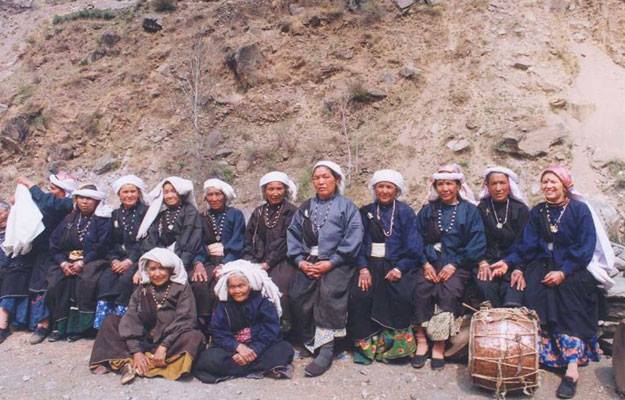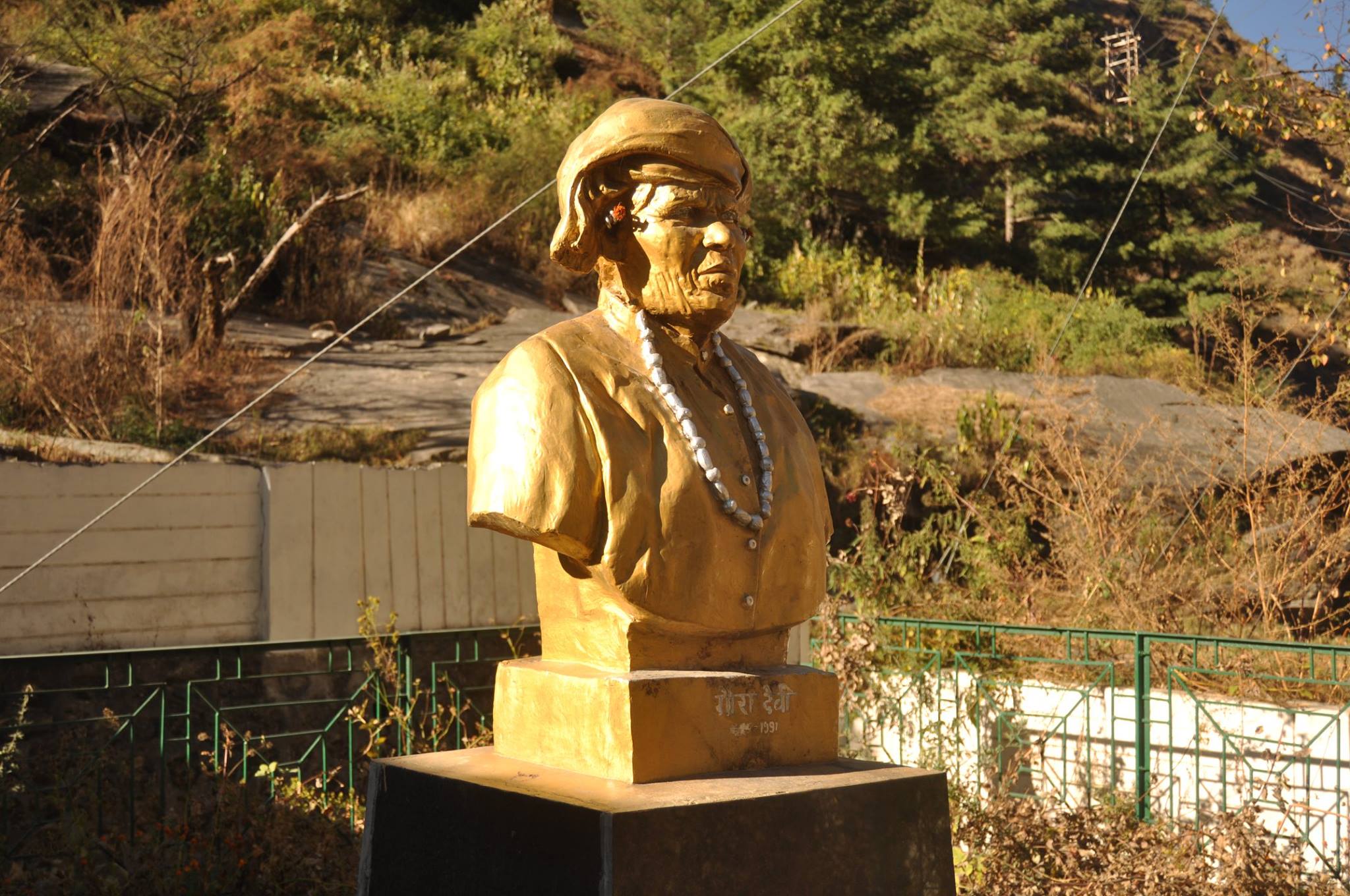Why Uttarakhand Remembers This Unsung Woman As a ‘Modern-Day Jhansi ki Rani’
A true environmentalist in every sense, Gaura Devi is a name that few would remember but her monumental contribution is what made Chipko Movement grab the world's attention.

In the history of environmental activism, there is perhaps no other community-driven resistance campaign that will come close to the impact left behind by the historic Chipko Movement.
Spearheaded by the villagers of the Alaknanda Valley in the 70s, it made the world take notice because of the non-violent way in which the entire resistance was mobilised.
The movement first originated in Mandal village in 1973, where the Uttar Pradesh state government had sanctioned the cutting down of close to 300 trees for commercial purposes.
Motivated by Chandi Prasad Bhatt, the founder of Dashauli Swarajya Seva Sangh (DGSS), the residents went ahead and physically embraced the trees to dissuade the loggers from cutting them down.
But the incident that would immortalise Chipko movement in the pages of history would happen near the Reni village in 1974.

Gaura Devi, a resident of the village, mobilised the women around her to stand up to the loggers, and their combined efforts would go on to save a whopping number of 2,500 trees from being axed.
While the movement today is quite a prominent part of the Indian psyche, only a few of us know about this valiant lady who braved the government, its gun-brandishing functionaries and the axe-wielding loggers to save the forest revered by the community.
Born in 1925, Gaura Devi hailed from the tribal Marchha family of the Laata village in Chamoli district. Her family was traditionally engaged in the wool trade, and she moved to a nearby village named Reni after her wedding.
Unfortunately, her husband passed away by the time their son was about two-years-old, leaving the 22-year-old mother to singlehandedly shoulder the domestic responsibilities as well as the family’s wool trade.
Gaura’s experiences had made her conscious towards the struggles of women, which made her active in the Panchayat and other community initiatives.
Because of her engagement in the community and advocacy of forest protection, the women of Reni began to look up to her. In the wake of the Chipko movement, they decided to approach her to head the Mahila Mangal Dal.
The goal of this grassroots organisation was to ensure cleanliness in the village as well as the protection of community forests.
Even though Gaura Devi was in her late forties, she readily accepted their offer.

By then the Chipko Movement had already begun to create widespread awareness and inspired by it, Gaura Devi started numerous campaigns in the nearby villages, to spread the word about the importance of forests.
Perhaps that is why in 1974, when the state government authorised the felling of 2,500 trees in the belt, and roped in contractors for the job, the villagers were quick to retaliate, with Bhatt and his DGSS volunteers joining them to protest against the government.
Just like the precursor in Mandal, they held peaceful demonstrations, which included public meetings, rallies and other such acts of defiance in Reni village and the adjoining areas.
Because of the earlier success in Mandal, the State government and local contractors hatched a scheme to divert the attention of the DGSS and local men to Chamoli under the false pretence of compensation.
With the men gone from Reni, the state thought it would be easier to go ahead with their plans and sent a group of forest officials and loggers on March 25—as fixed earlier.
Fortunately, a young girl from the village saw them approaching and rushed to inform Gaura Devi.
Knowing that there was no time to waste, she quickly mobilised a group of 27 women and confronted the men. While she initially tried to reason with them, it soon became clear to her that they would not budge from their stance.
By then, the officials, who were reportedly drunk, had begun to hurl abuses and brandish guns at them, while ordering the loggers to chop the trees.

The officials must have been under the assumption that the guns would scare these women away, but little did they know that they were made of sterner stuff and were willing to go to any extent to save the trees.
By bravely hugging the trees and refusing to let go, they put their own lives at stake but challenged the officials and loggers to go ahead. This visibly shook the men, who decided to lie low while the women vigilantly burnt the midnight oil to guard the trees.
Meanwhile, the DGSS volunteers and the men of Reni came to know about the proposed felling of trees on their way to Chamoli and rushed to the village. Certain that the trees would have been felled, they were shocked to see every single one of them standing unscathed—all thanks to the fearlessness and fortitude of 27 women.
When Bhatt met Gaura Devi the next day, she narrated what had happened, and specifically requested him to not report the forest officials or their obnoxious behaviour. She felt that they were only doing what was ordered from the top and the complaint would cost them their jobs.
News of their resistance brought people from near and far, and after a four-day impasse, the contractors left. Shortly after, the State government would comply with the villagers’ demands and issue a 10-year ban on all commercial deforestation in the area.
While this incident would go on to define the Chipko Movement, Gaura Devi’s name slowly faded away into oblivion.

Even after the incident, she kept on mobilising women to organise more protests and rallies, but because she was illiterate, she was never invited or asked about her views on the preservation of forests by policy-makers.
Except for the people in Uttarakhand, who have ensured that the tale of the woman revered as modern-day ‘Jhansi Ki Rani’ gets passed on from one generation to the other, Gaura Devi and her acts of bravery and selflessness became forgotten to the rest of the world.
At the age of 66, she died an uneventful death in Reni, forgotten and unsung.
You May Also Like: Before ‘Saving The Environment’ Was a Catchphrase, The Chipko Movement Showed Us How It’s Done
It was only when the Himalayan Action Research Centre and the Society for Participatory Research in Asia featured her in one of their books, did people slowly begin to appreciate and celebrate her contributions that immortalised the Chipko Movement and launched a wave of environmental activism across the world.
On the 45th anniversary of the historic movement led by the women of Reni, we remember this unsung environmental activist, without whose courageous leadership and heroic actions, the Chipko movement, or rather, the forests of Uttarakhand would have taken a very different course.
(Edited by Gayatri Mishra)
Like this story? Or have something to share?
Write to us: [email protected]
Connect with us on Facebook and Twitter

Similar Story

The Couple Behind ‘Trial by Fire’ & Their Long Battle for Justice After Uphaar Fire
Neelam and Shekhar Krishnamoorthy, the couple whose story has inspired Netflix’s Trial By Fire, lost their children in the Uphaar Cinema fire, and have been seeking justice for their children and other affected families ever since.
Read more >
If you found our stories insightful, informative, or even just enjoyable, we invite you to consider making a voluntary payment to support the work we do at The Better India. Your contribution helps us continue producing quality content that educates, inspires, and drives positive change.
Choose one of the payment options below for your contribution-
By paying for the stories you value, you directly contribute to sustaining our efforts focused on making a difference in the world. Together, let's ensure that impactful stories continue to be told and shared, enriching lives and communities alike.
Thank you for your support. Here are some frequently asked questions you might find helpful to know why you are contributing?


This story made me
-
97
-
121
-
89
-
167












